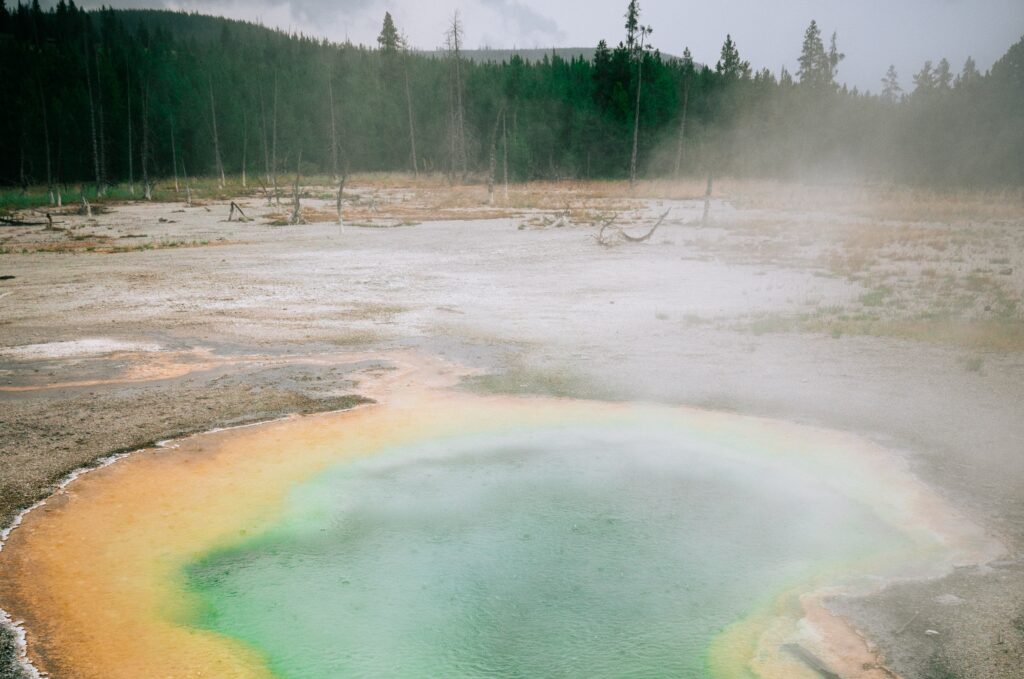Introduction
Geothermal energy is one of the most sustainable forms of energy that is derived from the natural heat of the earth. It has gained a lot of attention in recent years due to its renewable and clean nature. Geothermal energy can be harnessed in many ways, including generating electricity, heating buildings, and industrial processes. In this article, we will explore the environmental impact of geothermal energy
Reduced Carbon Emissions
Geothermal energy is considered one of the cleanest sources of energy available. It does not produce any harmful greenhouse gases like carbon dioxide (CO2), sulfur dioxide (SO2), or nitrogen oxides (NOx) that contribute to climate change. This means that geothermal energy helps to reduce carbon emissions and mitigate the effects of climate change.
Land Use
Geothermal energy plants require significant amounts of land to be set aside for drilling, power plants, and infrastructure. However, compared to other forms of energy such as fossil fuel plants, geothermal plants require relatively small areas of land for production. The decreased used of land make it more feasible as compared to conventional fossil fuels.
Land Disruption
The construction of geothermal plants can cause some land disruption. This is particularly true during drilling and the building of power plants. However, once the plant is operational, the land can be restored to its natural state.
Water Consumption
Geothermal energy requires a large amount of water for cooling purposes. This can cause concerns in areas with limited water resources. However, geothermal power plants can be designed to use recycled water, reducing the amount of water consumed.


Water Use and Pollution
Geothermal energy requires large amounts of water for cooling and other industrial processes. The extraction of hot water from underground reservoirs can also result in the depletion of water resources and changes in water quality. To mitigate the impact of geothermal energy on water resources, geothermal power plants should be located in areas with abundant water resources, and water should be used efficiently and recycled where possible. Geothermal energy plants can release small amounts of chemicals and minerals into the water. These chemicals and minerals are not harmful to the environment, but they must be monitored to ensure that they do not harm local water supplies.
Air Pollution
Geothermal energy does not produce air pollutants during operation, but the construction and drilling activities required for geothermal power plants can produce dust and other air pollutants. To minimize the impact of geothermal energy on air quality, proper mitigation measures should be implemented during construction and drilling activities. Geothermal plants do not produce any harmful air pollutants. However, during drilling and construction, the release of dust and other airborne particles can cause temporary air pollution. It is one of the main environmental impact of geothermal energy.
Noise Pollution
Geothermal plants can generate noise pollution during drilling and construction. However, once the plant is operational, the noise levels are usually quite low. Geothermal power plants can produce noise during operation, especially during drilling activities. The noise can impact the surrounding communities and wildlife. To minimize the impact of noise pollution, proper mitigation measures should be implemented during construction and operation.
Induced Seismicity
Indirect impacts of geothermal energy on the environment include induced seismicity, which is the triggering of small earthquakes due to fluid injection or withdrawal during drilling activities. This can affect the stability of the surrounding geological formations and cause land subsidence. The drilling process for geothermal energy can sometimes trigger earthquakes. However, these earthquakes are usually very small and do not cause any damage.
Biodiversity
Geothermal plants can have an impact on local biodiversity. However, this impact is generally considered to be minimal. The impact can be reduced by careful site selection and management. As mentioned earlier, geothermal power plants require large areas of land for drilling and installation of equipment. This can result in the loss of natural habitats and ecosystems, especially in areas with unique biodiversity. To minimize the impact on the environment, geothermal power plants should be located in areas with minimal impact on sensitive habitats and ecosystems.


Thermal Pollution
Geothermal energy plants can cause thermal pollution, which is an increase in water temperature in nearby waterways. This can negatively impact local aquatic life. However, this can be mitigated by using cooling towers or other cooling technologies.
Waste Management
Geothermal energy plants produce some waste materials, such as drilling mud and scale. These materials are not hazardous but must be disposed of properly. Proper waste management procedures can reduce the impact of geothermal energy on the environment.
Long-Term Sustainability
Geothermal energy is a renewable energy source that has the potential to provide a significant portion of the world’s energy needs. Unlike fossil fuels, geothermal energy is not finite and will not run out in the foreseeable future. This makes it a sustainable option for meeting our energy needs.
Geothermal Energy and Climate Change
Geothermal energy has the potential to play a significant role in mitigating climate change by reducing greenhouse gas emissions. The use of geothermal energy can help reduce the reliance on fossil fuels and transition to a low-carbon economy.
To minimize the impact of geothermal energy on the environment, several mitigation measures can be implemented. These include:
- Proper site selection to minimize the impact on sensitive habitats and ecosystems.
- Efficient use of water resources and implementation of water recycling technologies.
- Implementation of noise mitigation measures during construction and operation.
- Implementation of dust control measures during construction and drilling activities.
- Monitoring of induced seismicity and implementation of measures to minimize the risk.
Conclusion
Overall, geothermal energy is one of the cleanest and most sustainable forms of energy available. It has the potential to provide a significant portion of the world’s energy needs while reducing carbon emissions and mitigating the effects of climate change. However, like all forms of energy production, geothermal energy has some environmental impacts that must be carefully managed to ensure that they do not cause harm to the environment. With proper planning and management, geothermal energy can provide a sustainable source of energy for generations to come. In this article, we have explored the environmental impact of geothermal energy.

